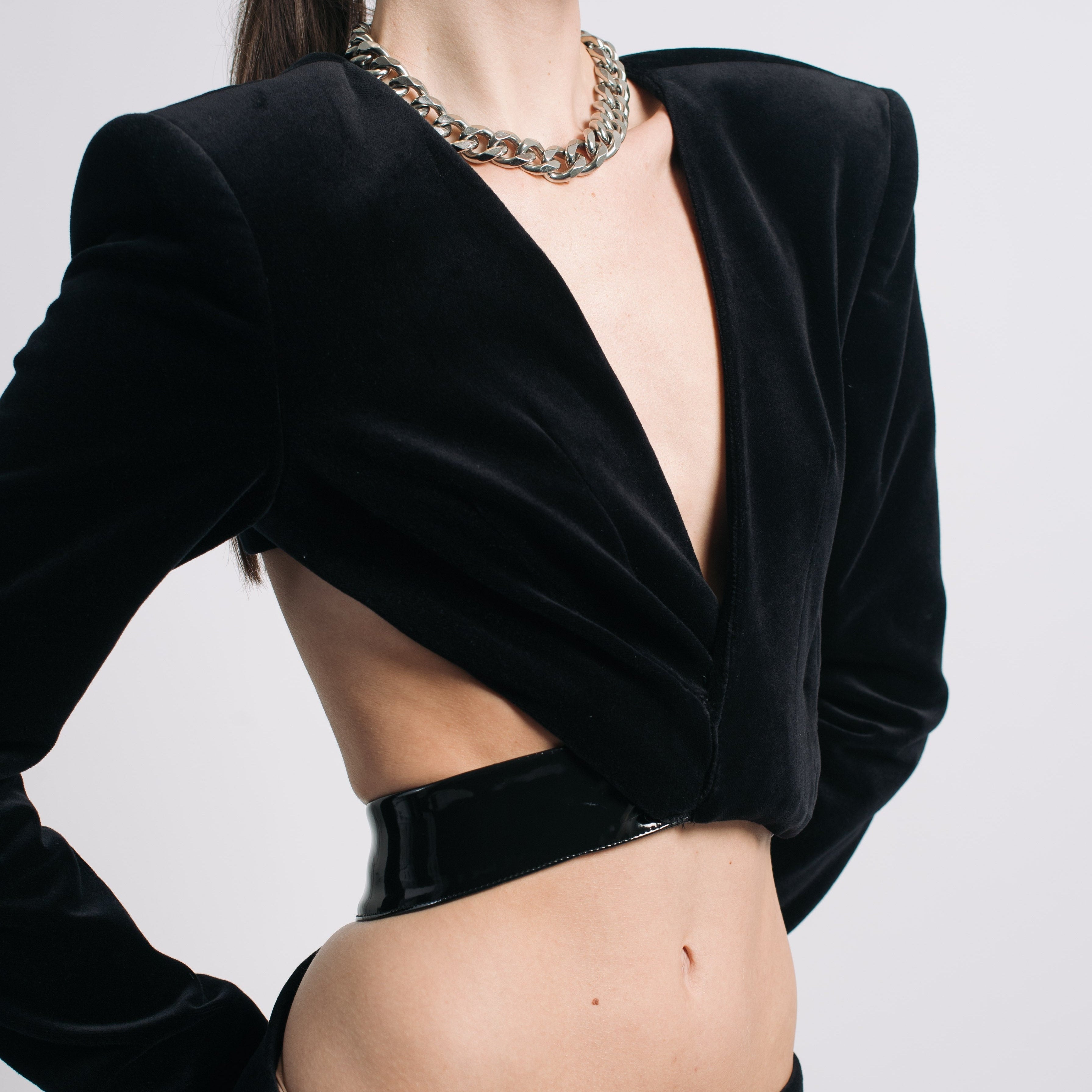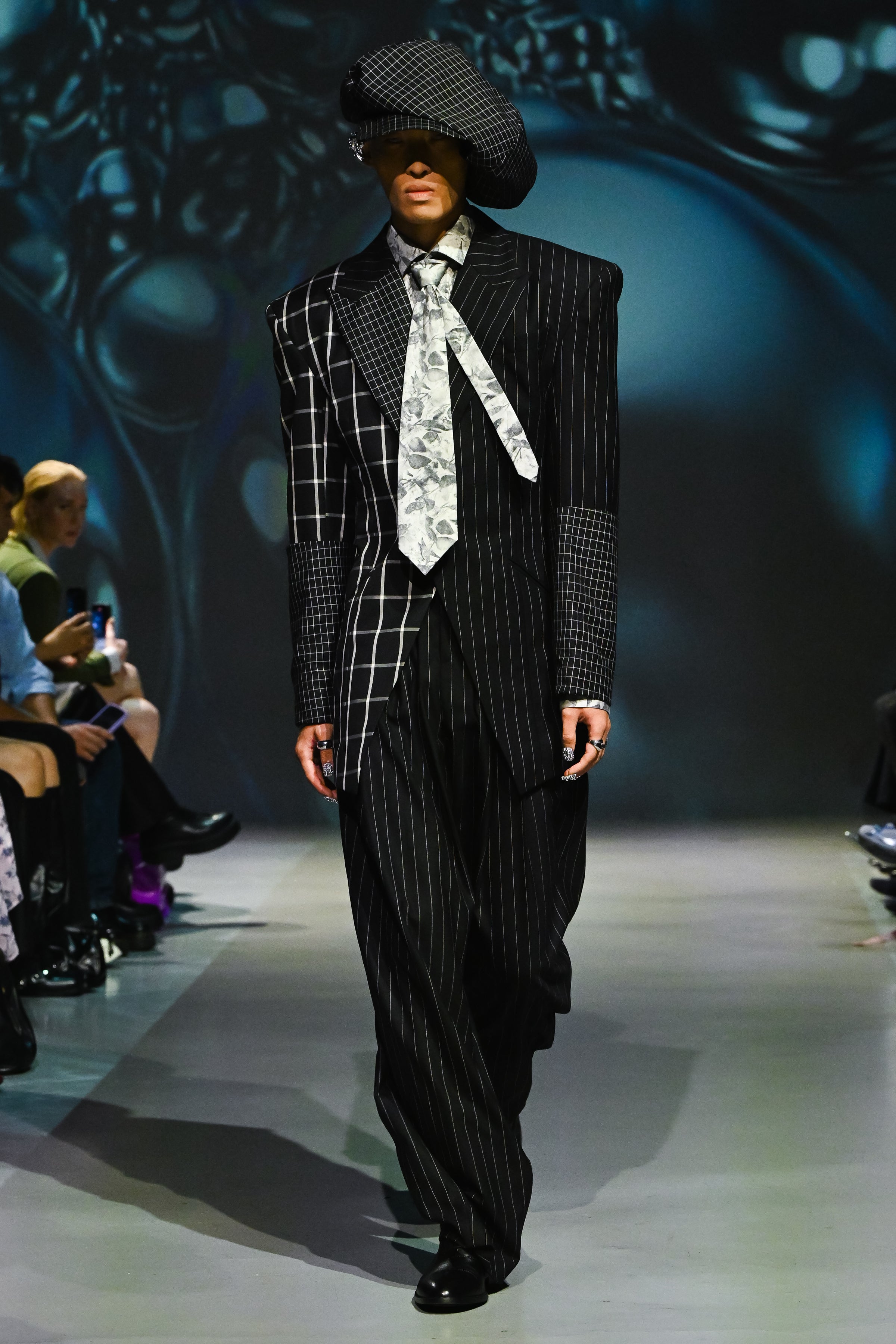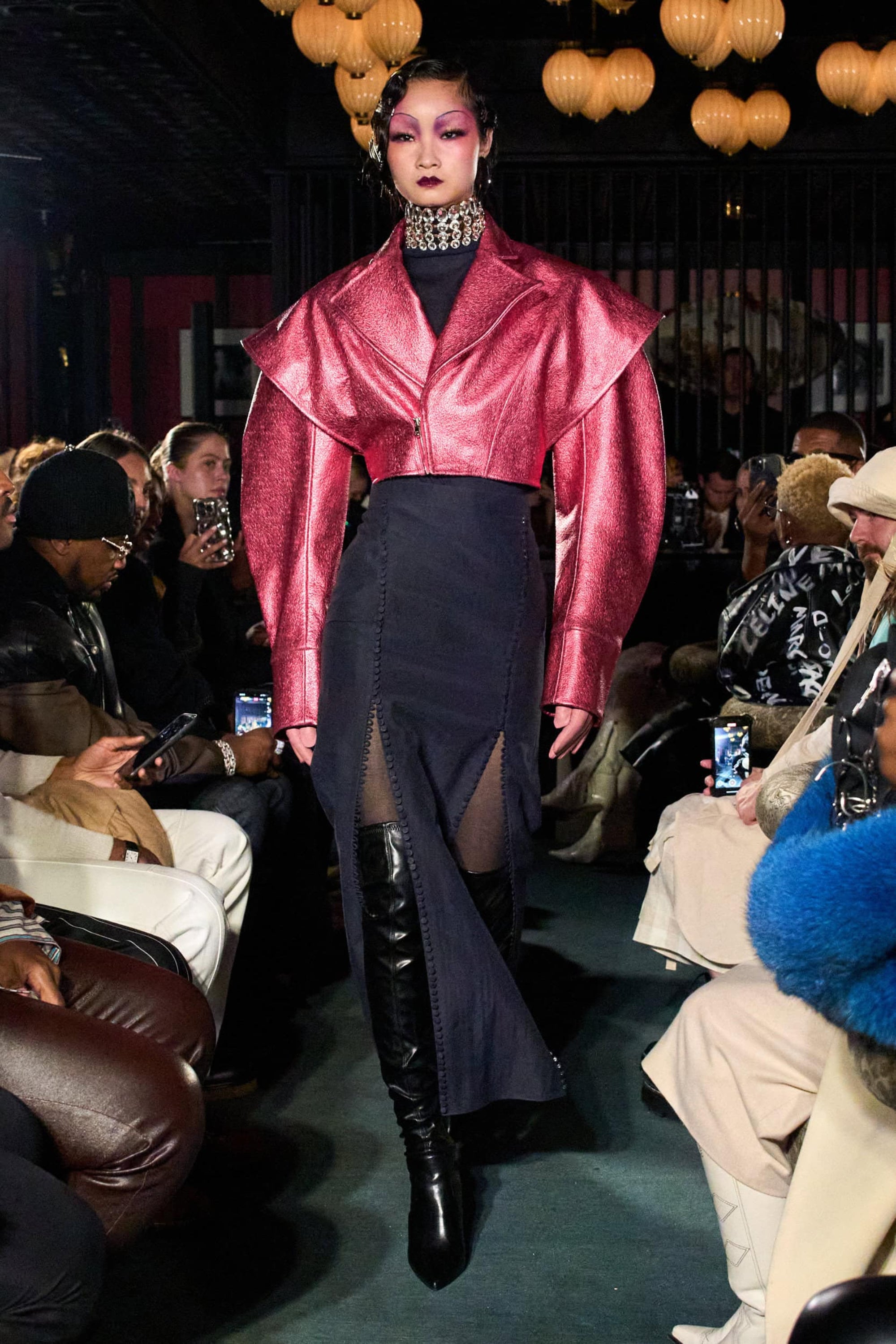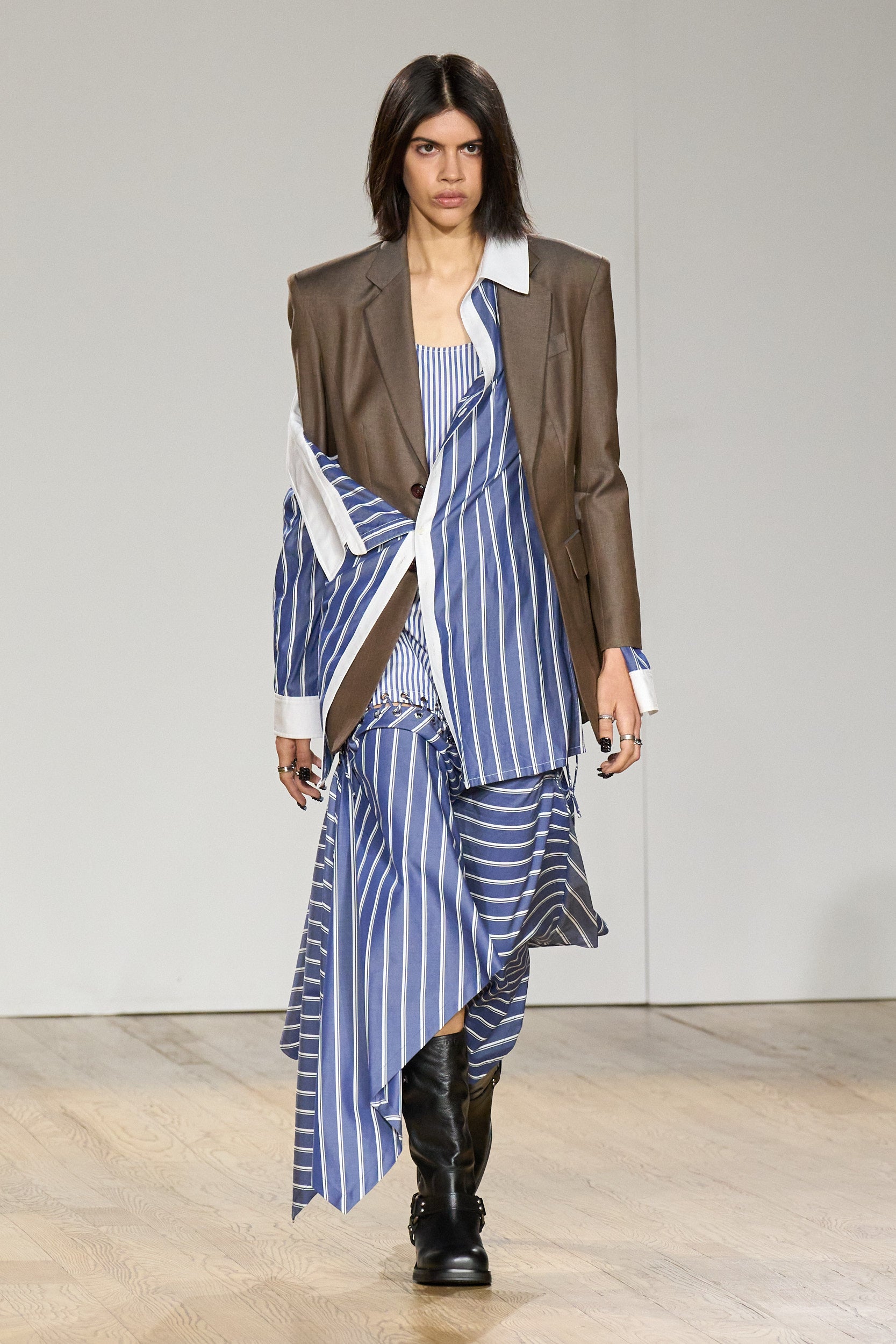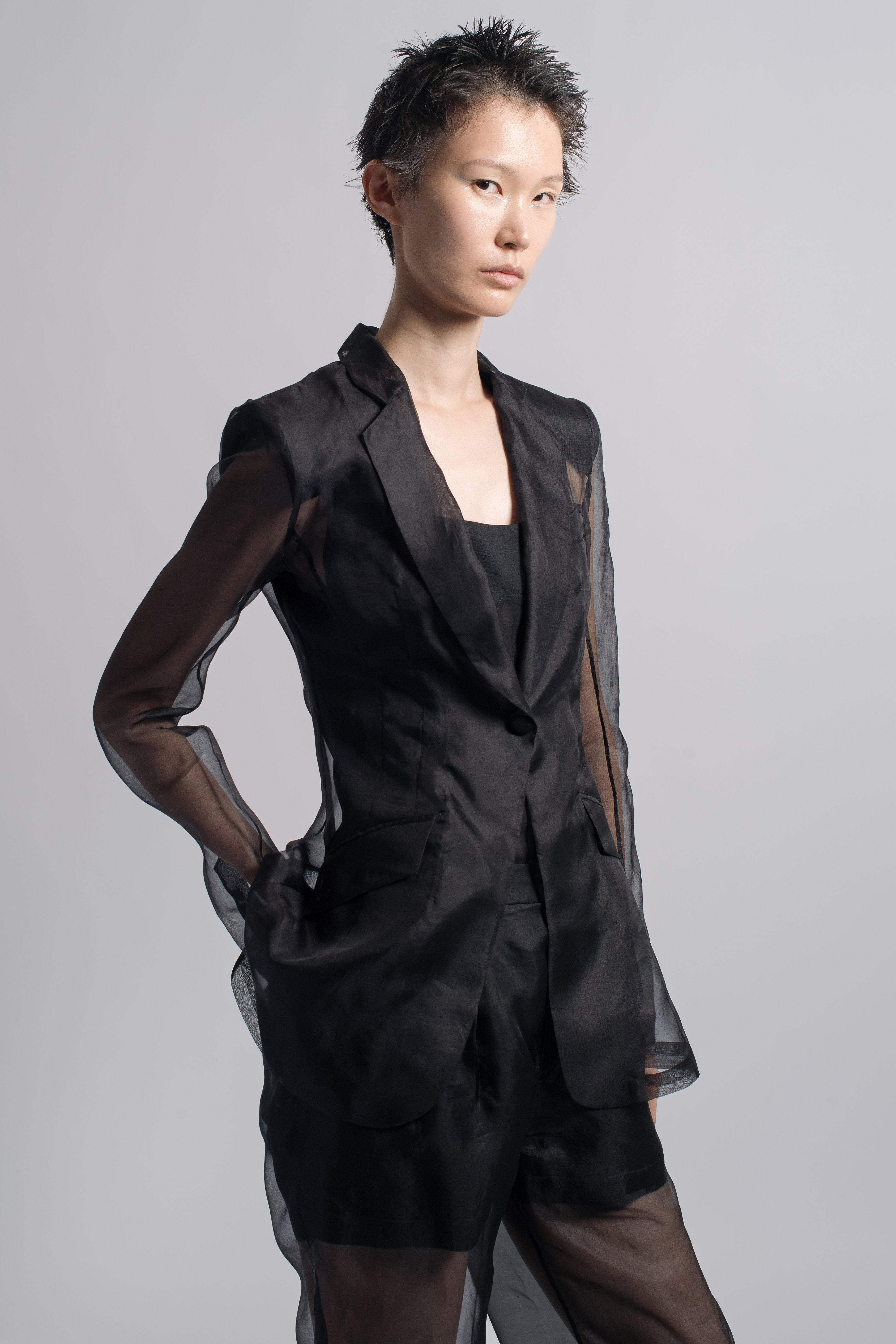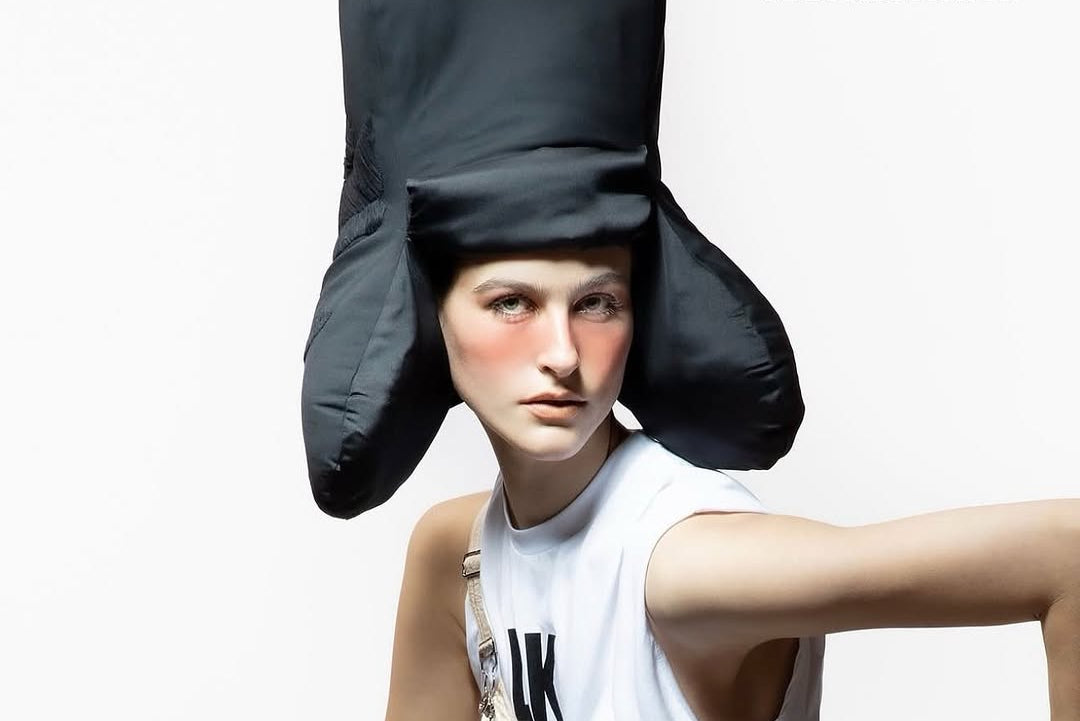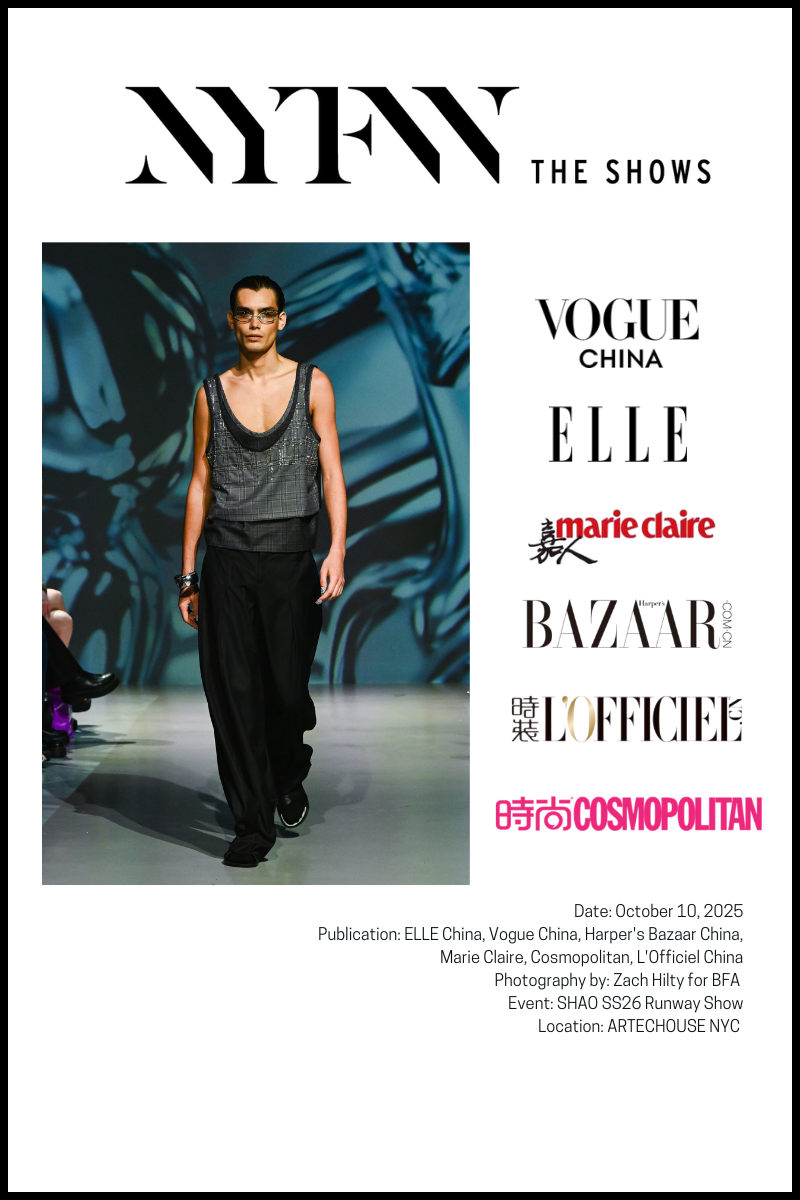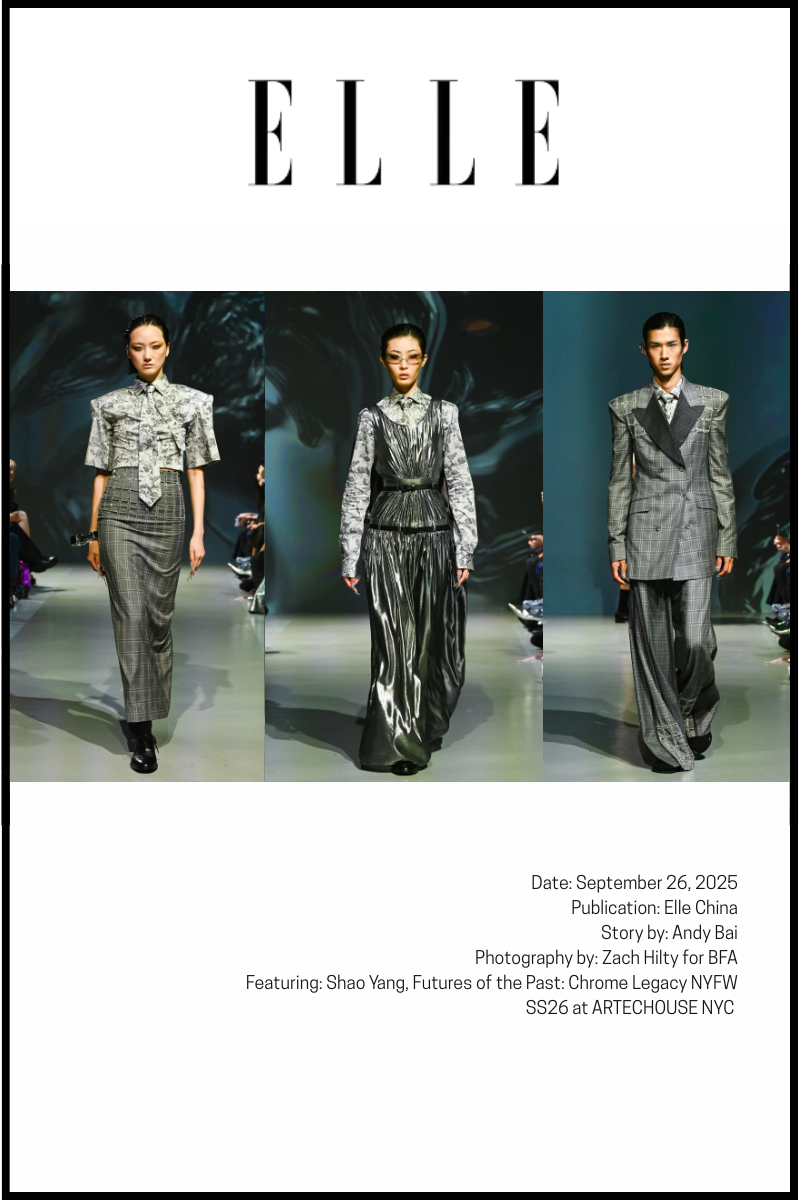The runway images announce themselves before you process the words. Three looks stride out with Chinese characters that aren't whispering cultural heritage—they're claiming space with the same unapologetic energy as graffiti that made it past every gatekeeper. Against chrome and silver fabrics that catch light like rain-slicked urban surfaces, the text reads like insider communication that refuses translation.
The Text That Refuses Translation

Look 25 from Futures of the Past: Chrome Legacy SHAO SS26
傻逼 (shǎbī)—roughly "stupid cunt" in its full confrontational glory—sits on garments like linguistic reclamation. This is the kind of term that gets questioned as "appropriate" when Asian communities use it, while Western culture freely deploys equally direct expressions across fashion, music, and art. Placing it on runway pieces asserts the right to expression, a freedom dominant cultures take for granted.

Look 11 from Futures of the Past: Chrome Legacy SHAO SS26
装逼 (zhuāngbī) functions as meta-commentary on fashion itself. "Pretentious" or "putting on airs"—an industry built on performance getting called out for pretension, in language most industry insiders won't understand without translation. The designer leaves Easter eggs for cultural compatriots while maintaining plausible deniability with non-Chinese audiences.

Look 26 from Futures of the Past: Chrome Legacy SHAO SS26
下個星期二見 (xià gè xīngqīèr jiàn)—"see you next Tuesday"—delivers the acronym's vulgar payload through linguistic backdoor. The phrase translates literally as innocent farewell while functioning as Chinese rendering of "C U Next Tuesday." This double-coding lets the text operate as both polite statement and profane declaration simultaneously, collapsing distance between surface meaning and insider understanding.
These three phrases embody design rebellion—establishing design authority through one's own language, refusing to compromise for palatability, choosing direct expression without explanation in spaces that have historically demanded Asian designers "translate" their culture into easily acceptable forms.
Insider Authority Versus Borrowed Aesthetics
Fashion's relationship with Chinese characters has historically moved between reverent appropriation and decorative use. Western brands apply characters hoping for cultural mystique while sometimes missing the mark entirely. The Dolce & Gabbana chopsticks campaign that damaged their China market stands as reminder of how challenging cross-cultural communication becomes when context gets lost.
Shao Yang—born in Taiwan, raised in Brooklyn, educated across Eastern and Western fashion capitals—brings fluency in both cultural codes to Chinese character deployment. The characters communicate directly to those who understand, while asserting presence in spaces that have historically expected cultural translation and softening.

The SS26 collection's use of colloquial Chinese creates garments that reward cultural literacy while commanding visual attention from those outside the linguistic reference points. It's speaking your native language confidently in spaces where that voice has often been quieted.
Blackpink Lisa and the Linguistic Rebellion Precedent
The conversation around Chinese characters in fashion shifted dramatically after Blackpink's Lisa wore pants covered in explicit Chinese text, sparking international debates about cultural ownership, appropriateness, and who gets to deploy bold language in fashion. Lisa—Thai-born, K-pop trained, globally famous—faced scrutiny that revealed how differently audiences react to Asian artists using provocative Asian language compared to Western artists deploying equivalent expressions. The moment opened space for broader discussions about linguistic authenticity and cultural boldness in fashion, demonstrating that global audiences increasingly embrace genuine cultural expression over sanitized versions designed for Western comfort.

SHAO's SS26 collection builds on this cultural momentum, pushing even further into territory where Chinese text functions as design authority rather than borrowed decoration. The difference lies in how cultural insiders deploy their own linguistic territory—Shao Yang's Taiwanese-American perspective informs every decision from garment construction to text placement to collection narrative. The runway pieces don't apologize for their vulgarity or explain their references. They assume belonging and invite everyone into that confidence, speaking directly to those who understand the linguistic layers while maintaining visual power that transcends translation.
Chrome as Cultural Metaphor
The collection title itself—Chrome Legacy—signals the methodology. Chrome evokes contemporary industrial aesthetics, technological modernity, the shiny surface of present-day manufacturing capacity. Legacy points toward inherited cultural weight, what you carry forward from previous generations. Together they create the collision that defines contemporary Taiwanese-American design experience: honoring what came before while claiming space in what exists now.
Using casual, crude Chinese addresses this directly. The characters aren't classical calligraphy or ancient proverbs that non-Chinese audiences expect from "Asian-inspired" fashion. They're contemporary colloquial language carrying tones and connotations that resist easy translation. This choice refuses the cultural translator role that Asian designers in Western markets often get assigned.
The metallic fabrics reference present economic reality—manufacturing sophistication, industrial capacity, production infrastructure. Fashion's relationship with Asian manufacturing exists in uncomfortable tension: Western luxury brands depend on facilities while maintaining careful silence about manufacturing locations. By using obviously industrial materials paired with Chinese text, the collection makes this tension visible. These garments don't pretend to transcend manufacturing reality or hide behind artisanal mystique. They embrace industrial aesthetic as cultural statement.

Beyond Permission
SHAO's SS26 deployment of Chinese characters doesn't argue why Chinese language belongs on runway garments. It assumes that belonging. This shift from justification to assumption marks real power. The collection plants Chinese text in positions of visual dominance and lets non-Chinese audiences deal with their own literacy limitations, reversing the usual dynamic where Asian designers translate their culture for Western consumption.
The metallic fabrics shining under runway lights reflect more than contemporary aesthetic preference. They catch and throw back the gaze of an industry that has historically looked at Asian designers as sources of exotic inspiration rather than arbiters of fashion's future direction. In that reflection, what becomes visible doesn't whisper about harmonious East-meets-West fusion—it announces cultural authority claiming space without apology, speaking in its own language at full volume, trusting that those who matter will understand and those who don't will eventually catch up or become irrelevant.
These three looks offer more than striking runway visuals: a glimpse of fashion's future where cultural insiders set terms, where translation becomes optional rather than mandatory, where Chinese characters signal design authority rather than decorative flourish. The arrival depends on designers who refuse to wait for permission before speaking their own language.
